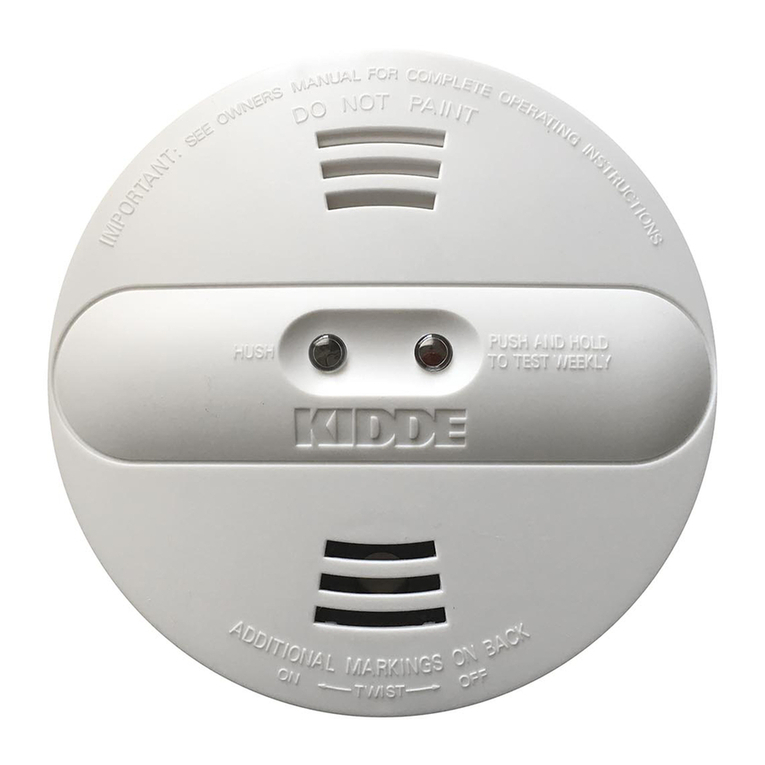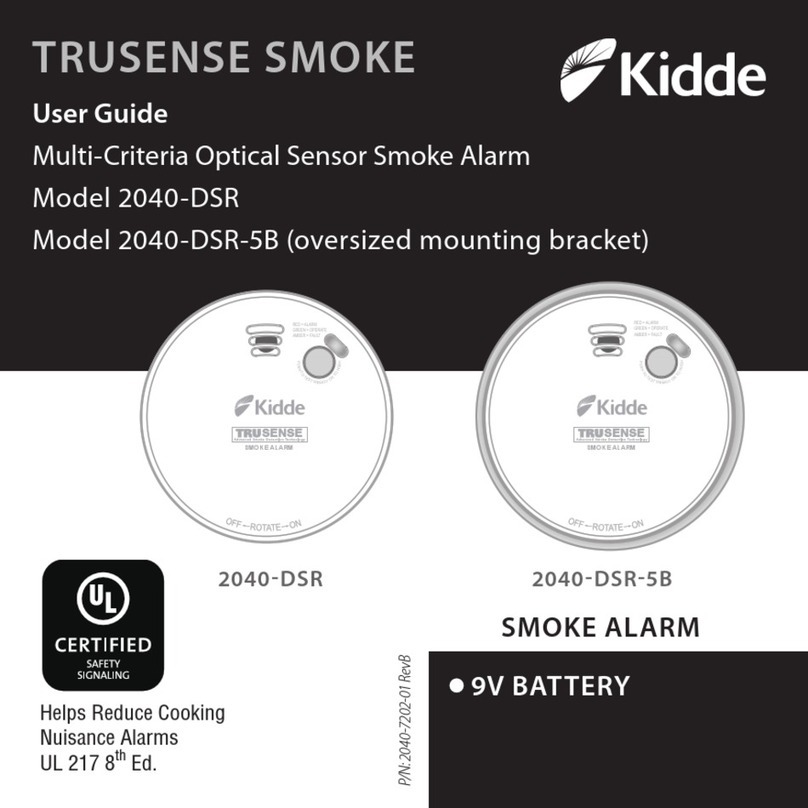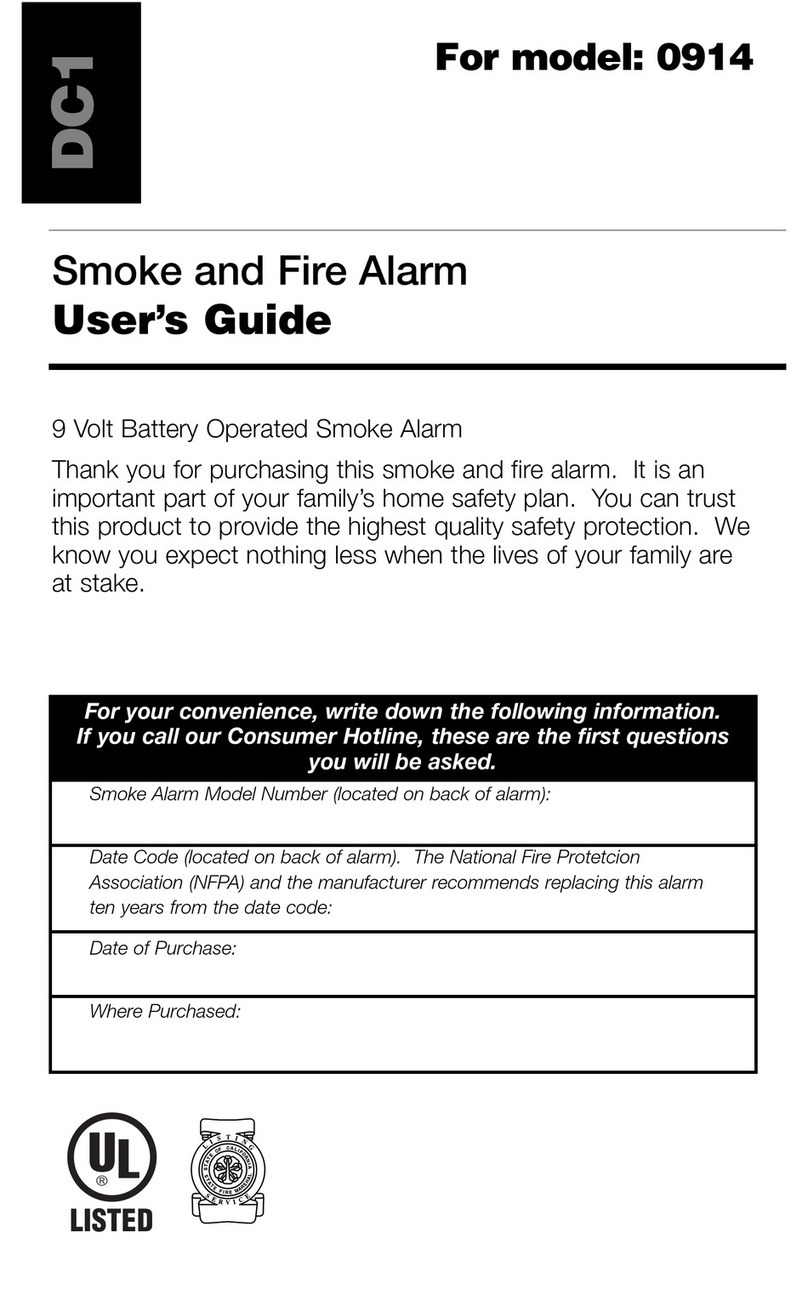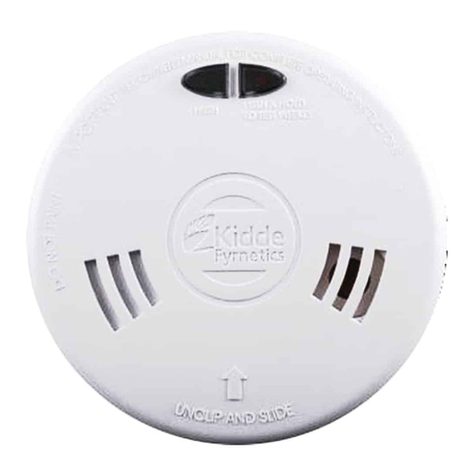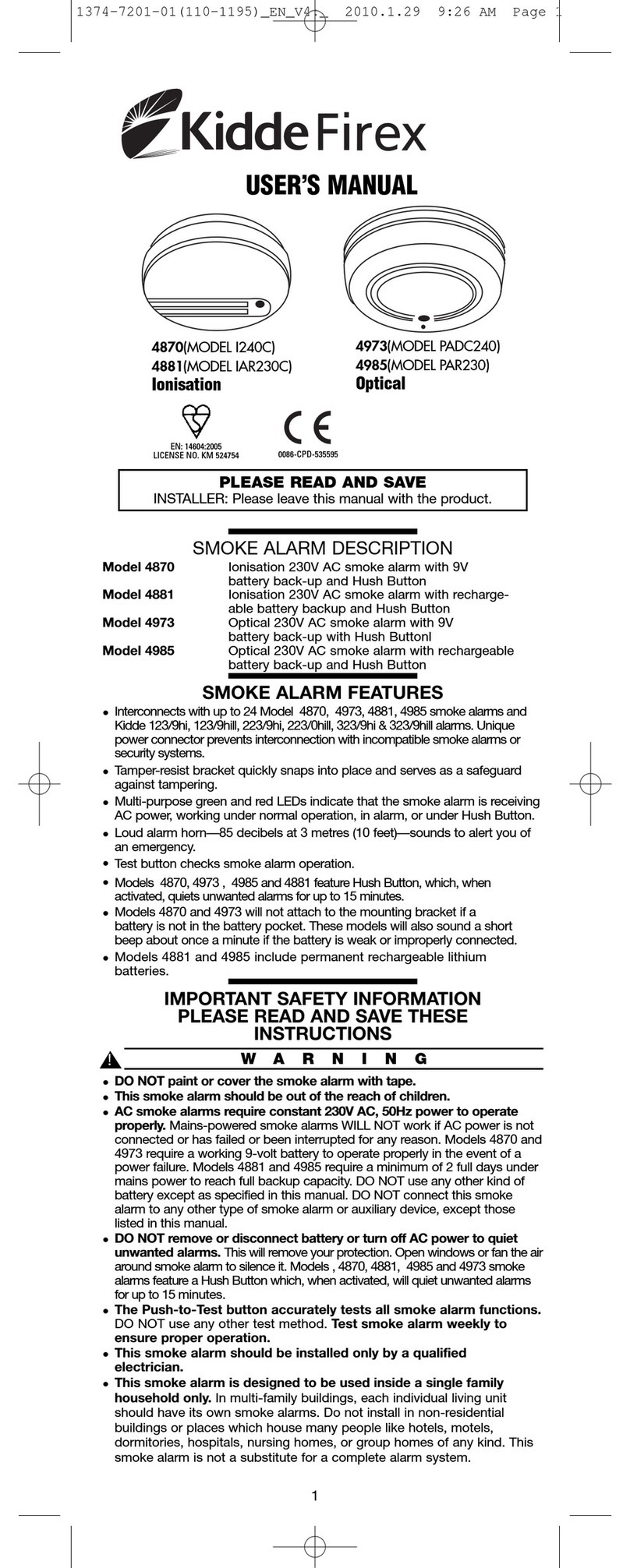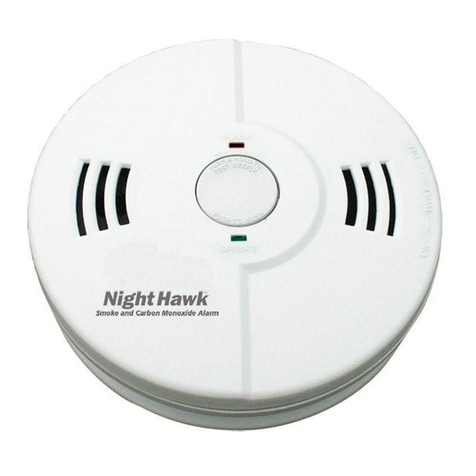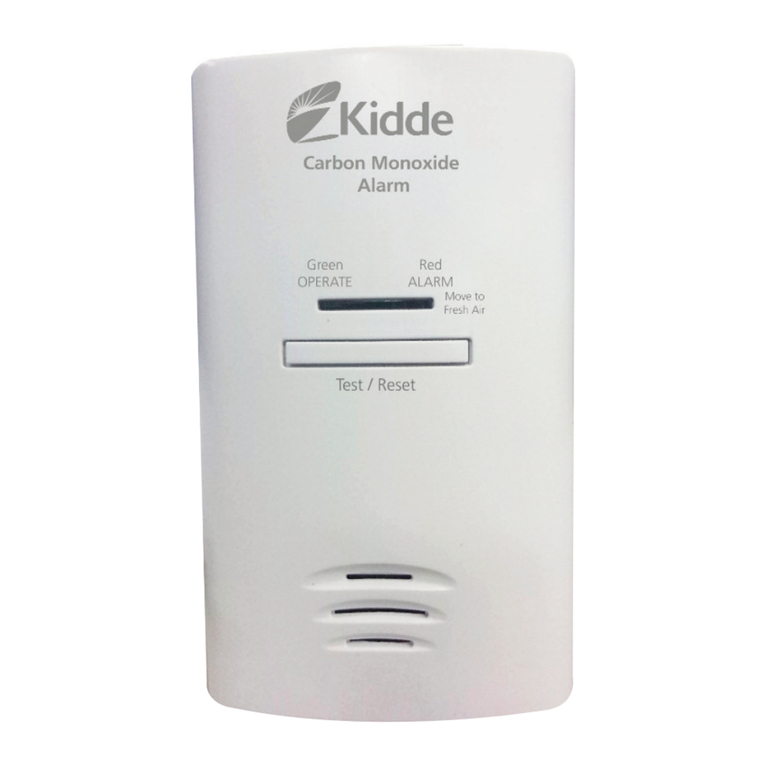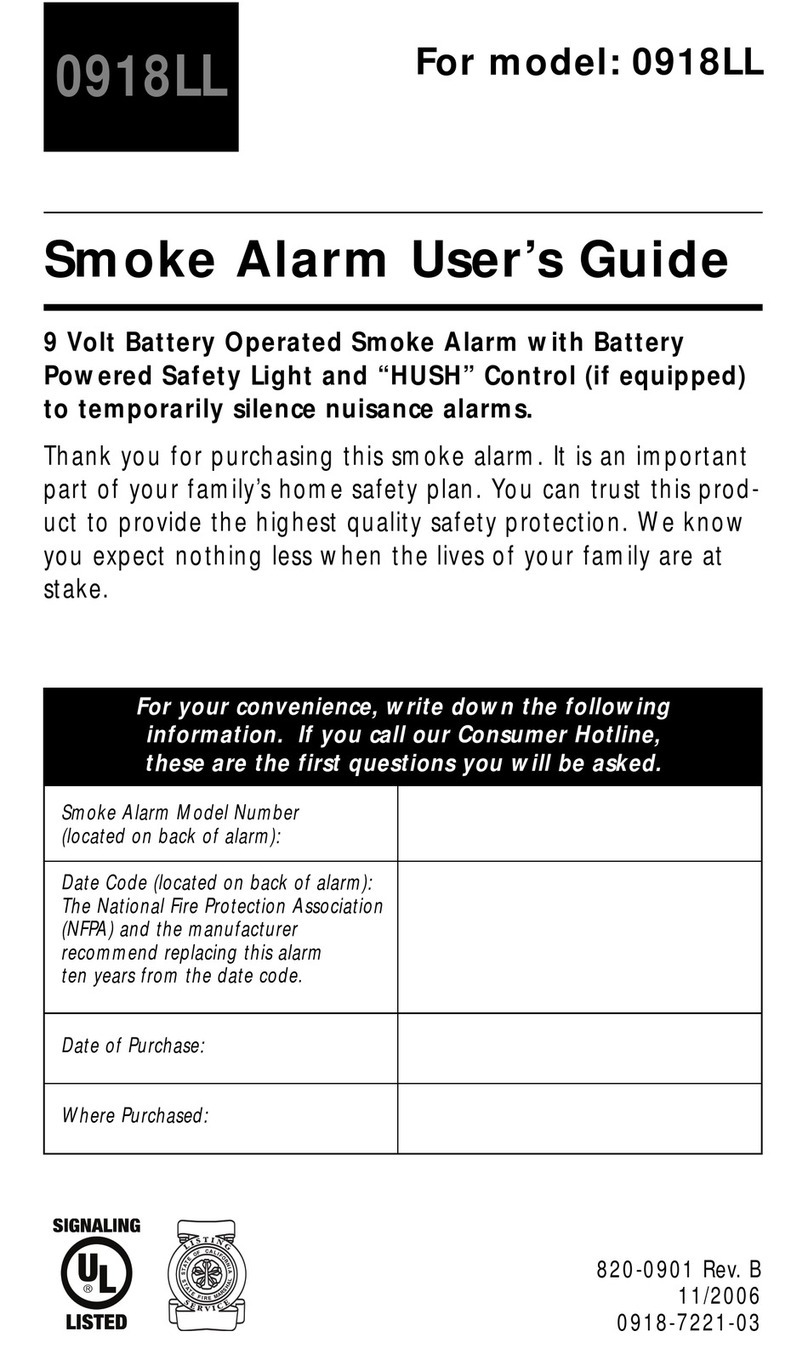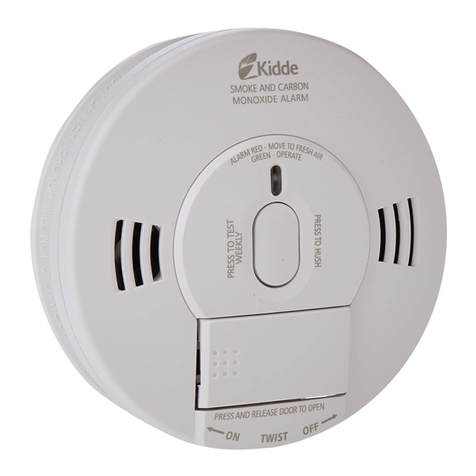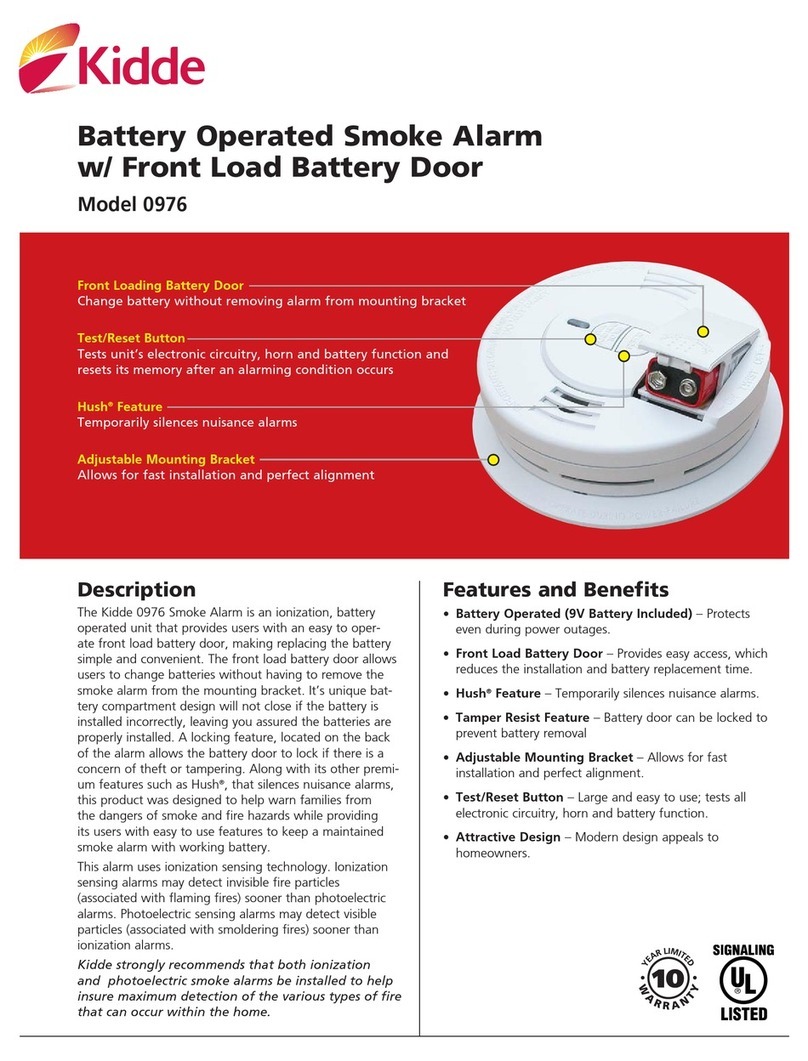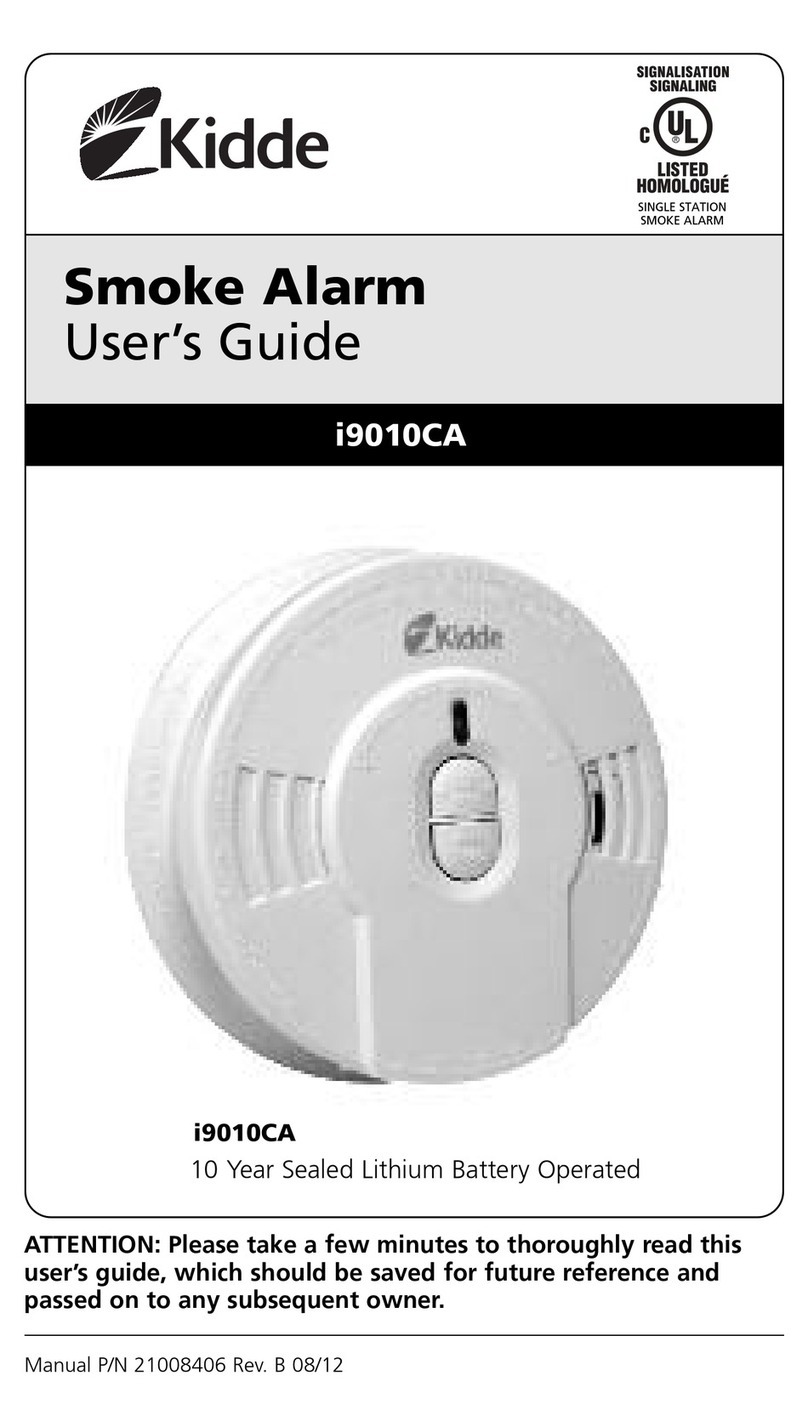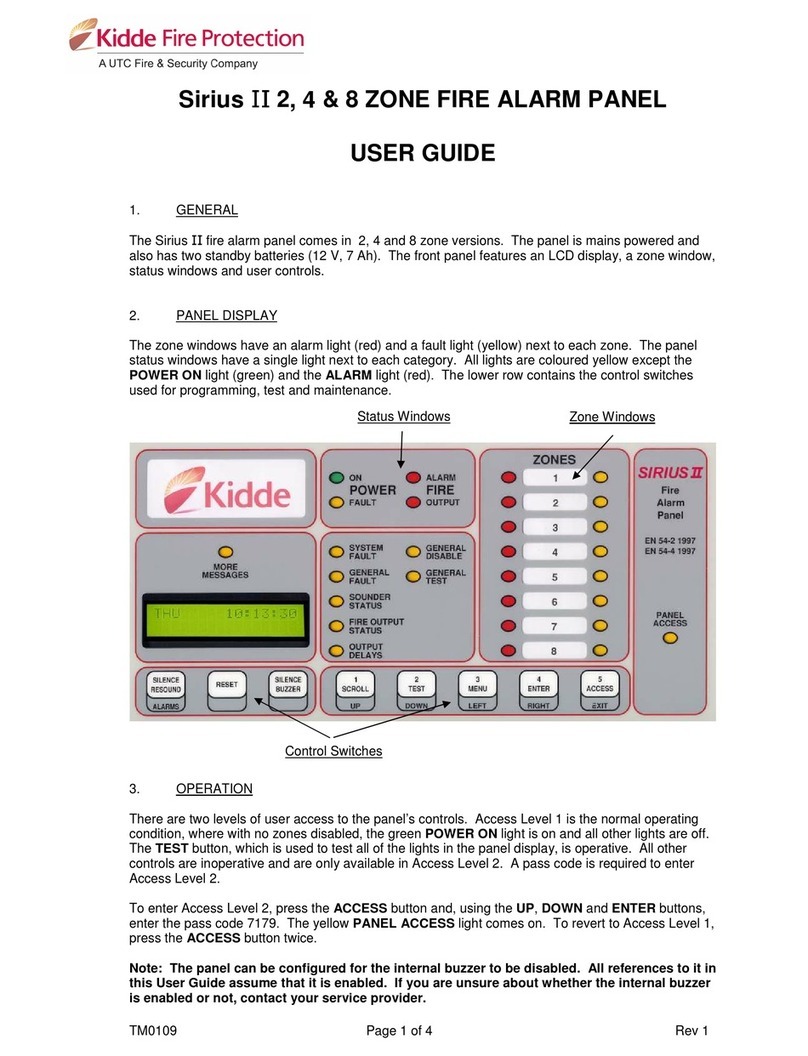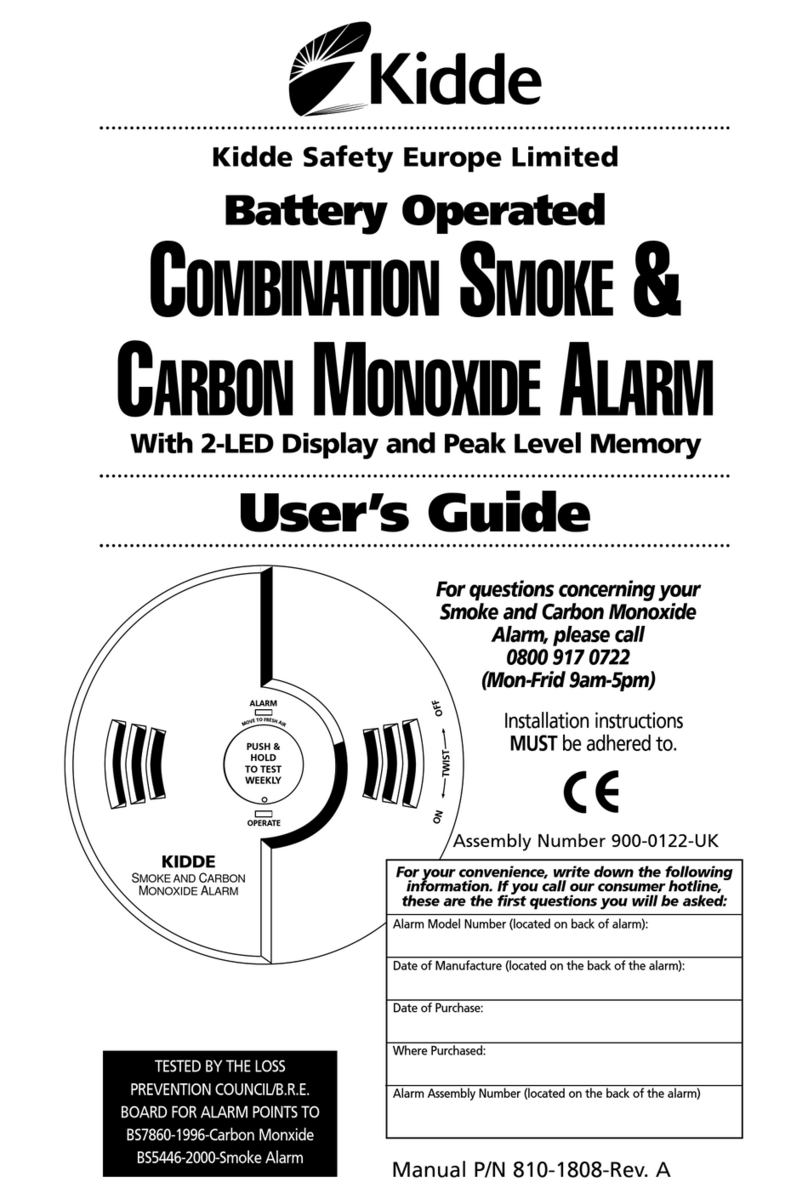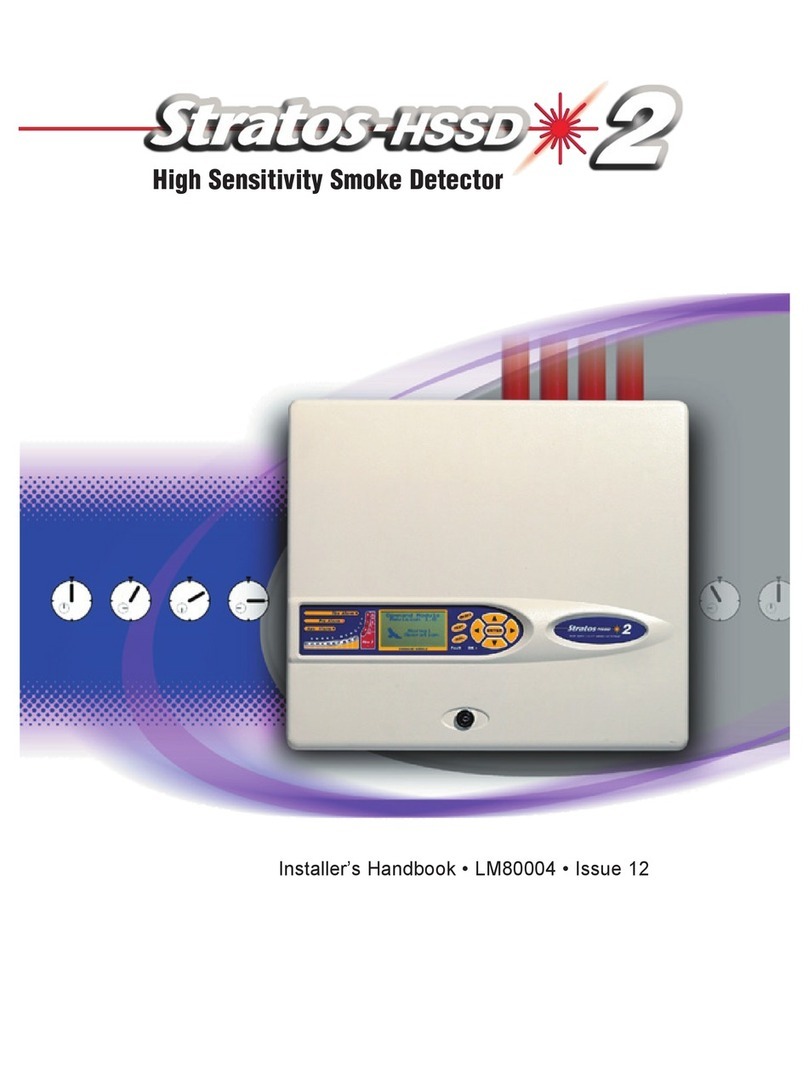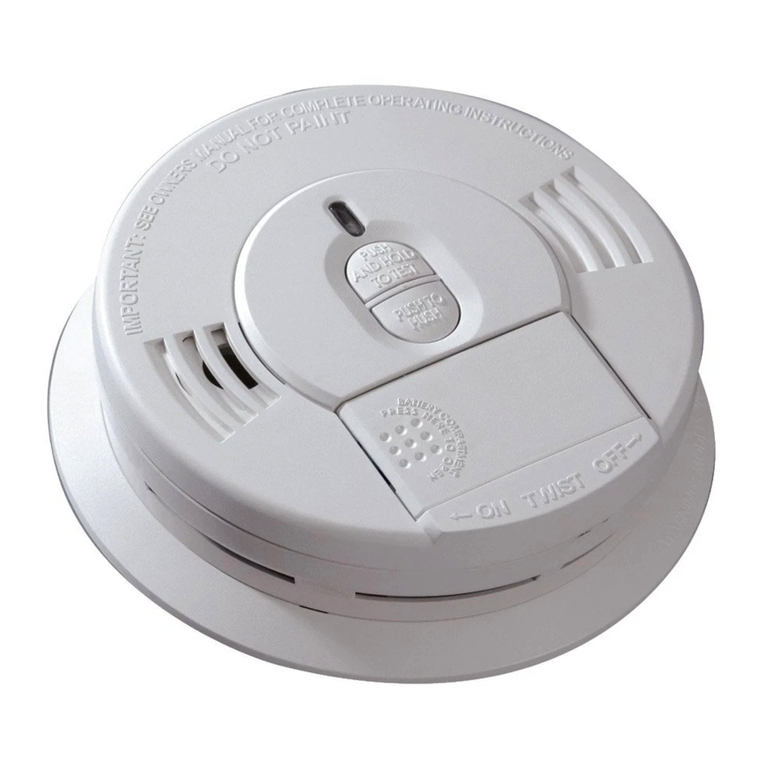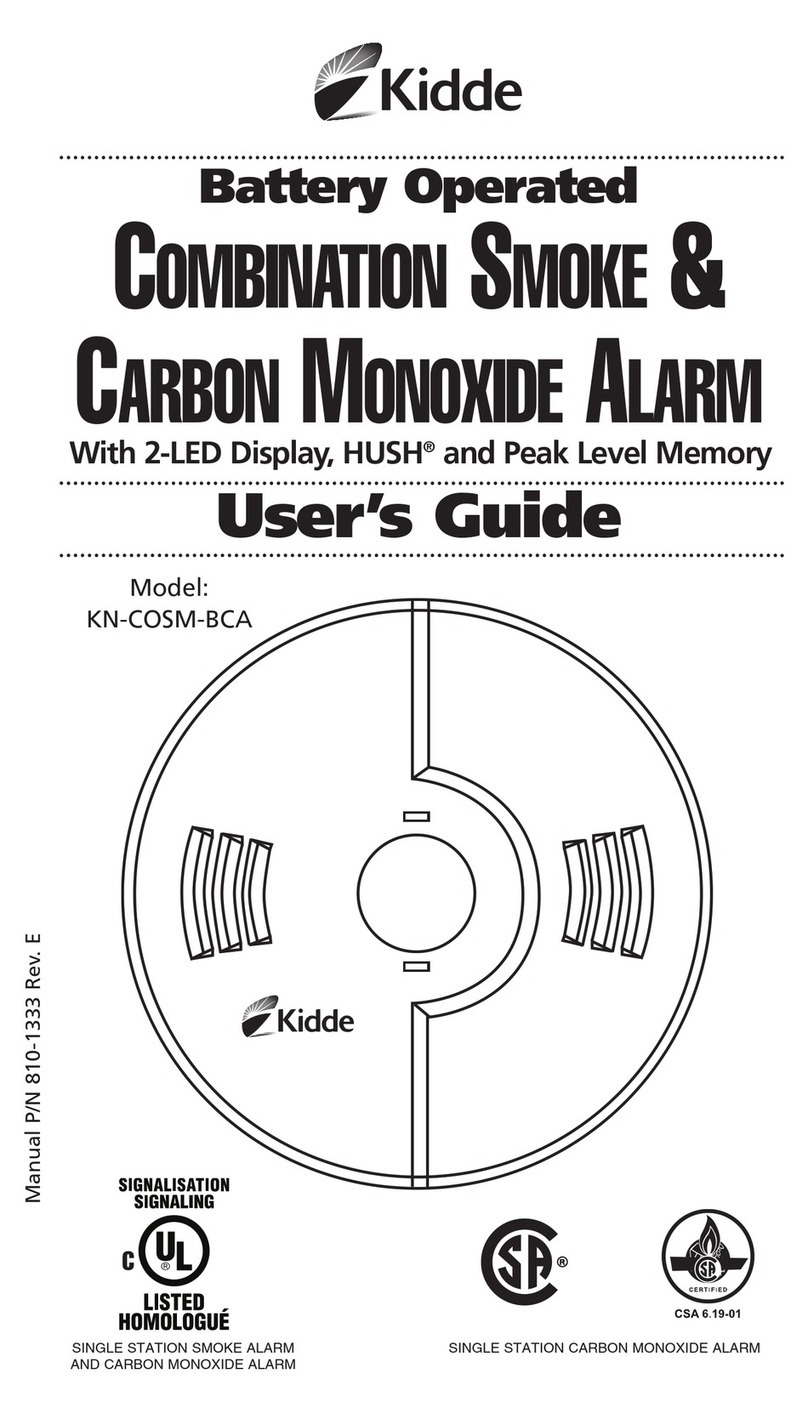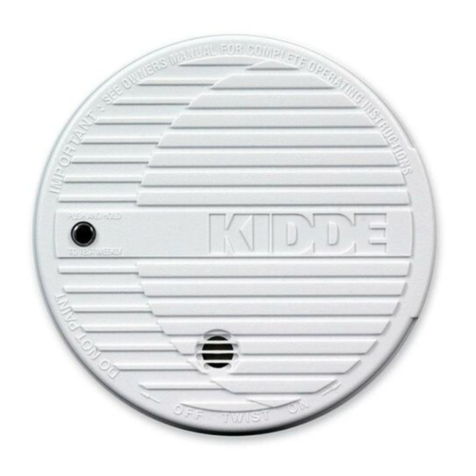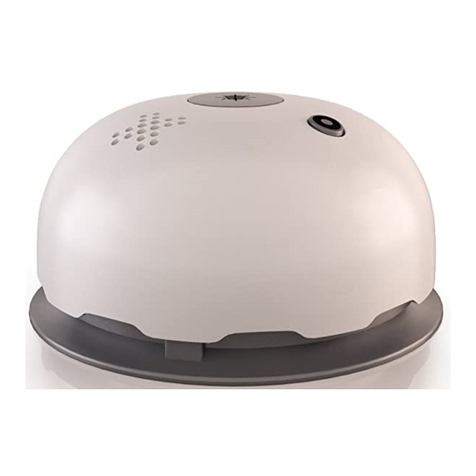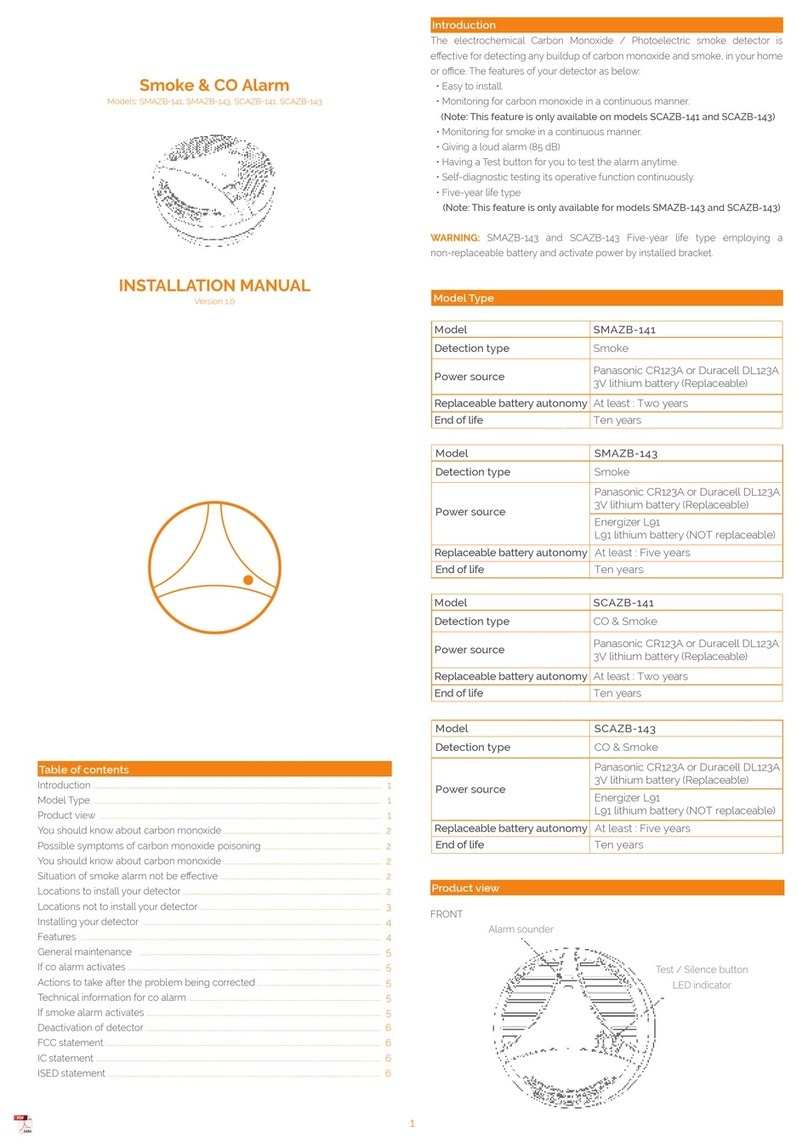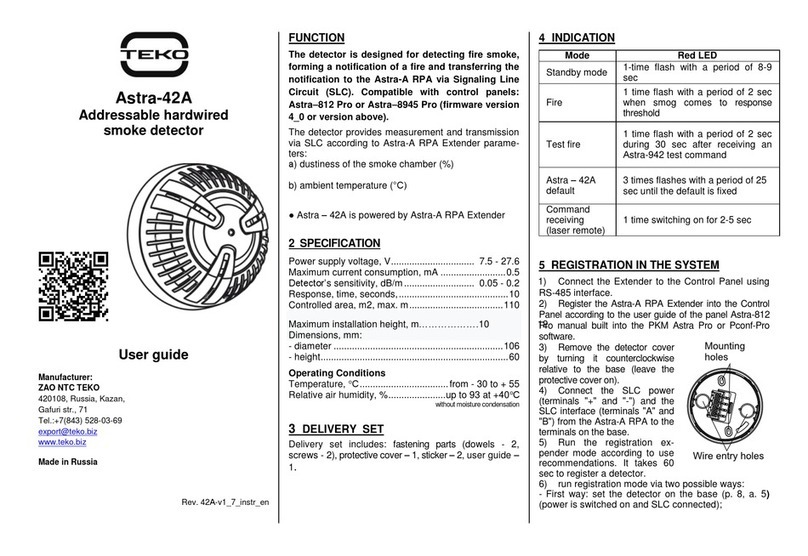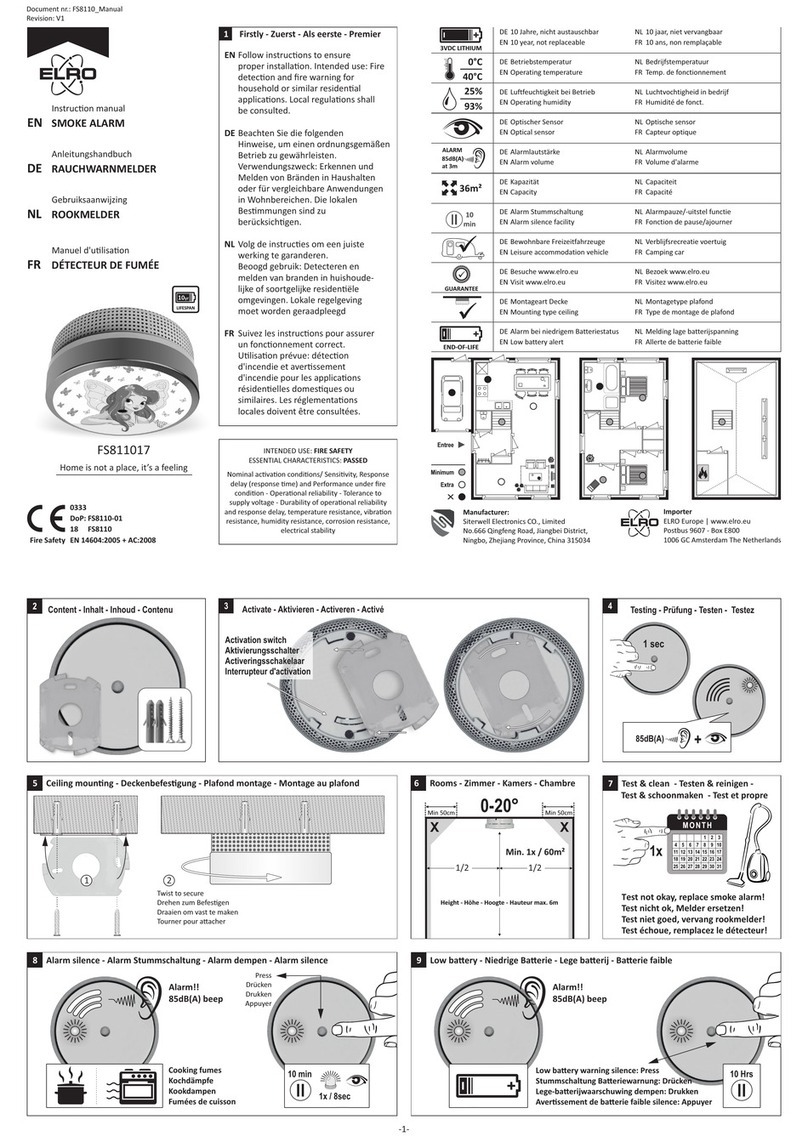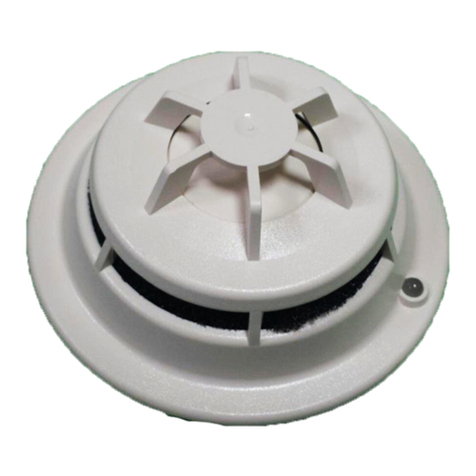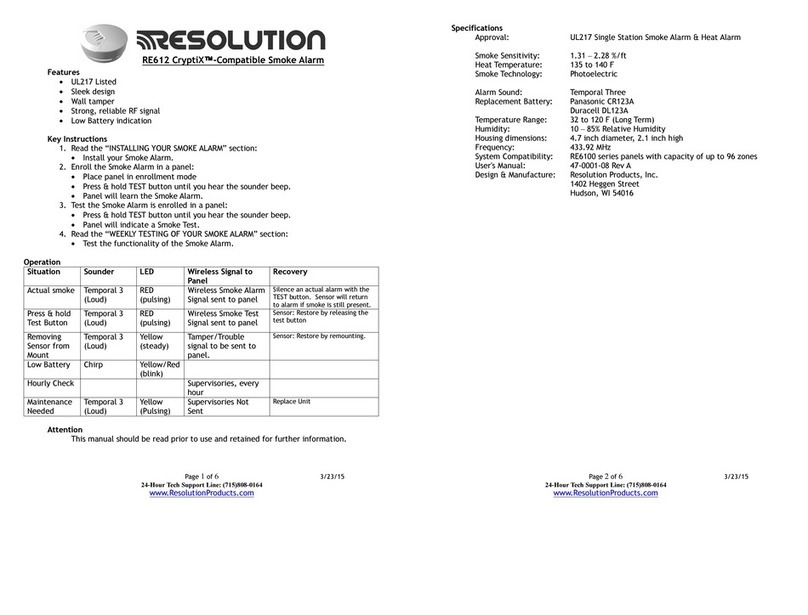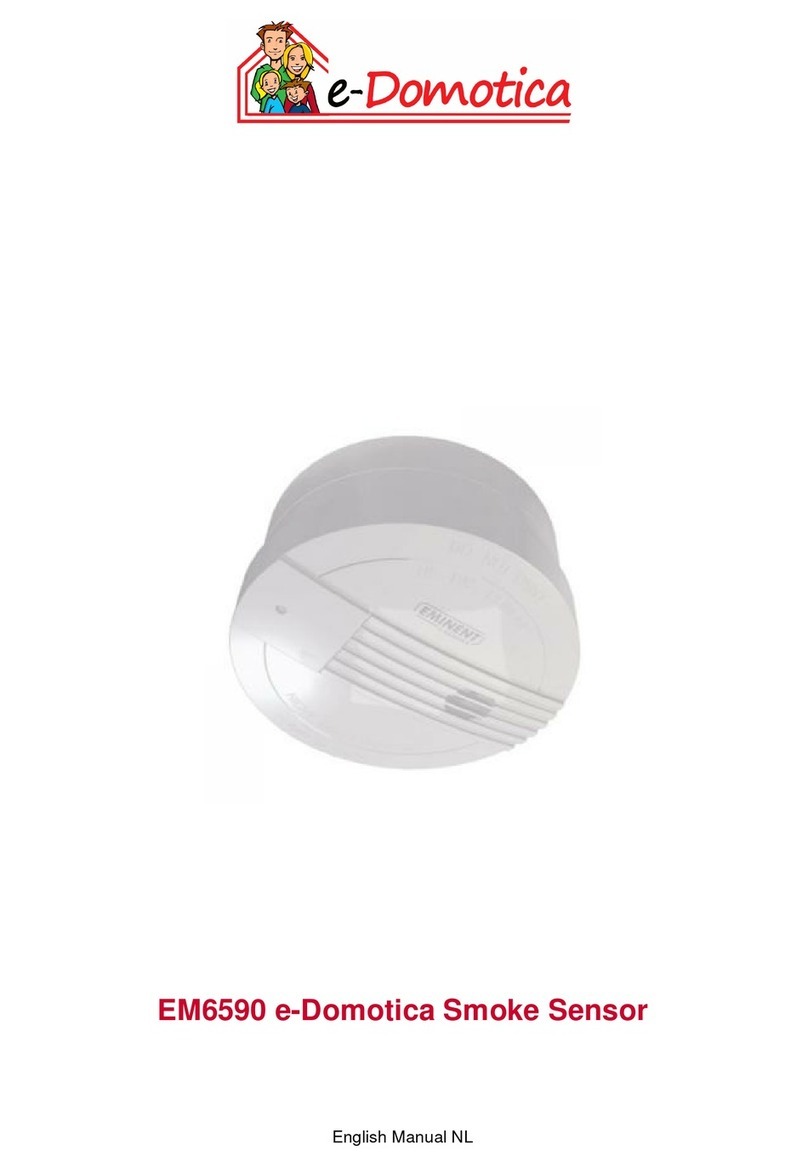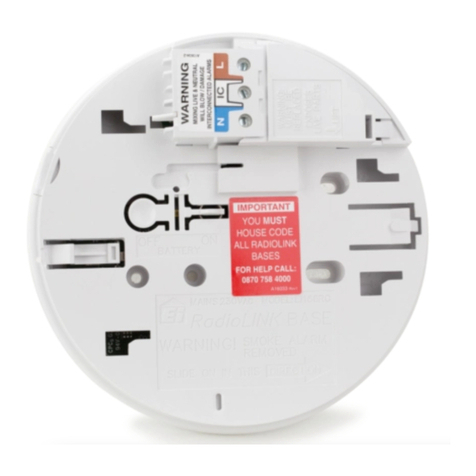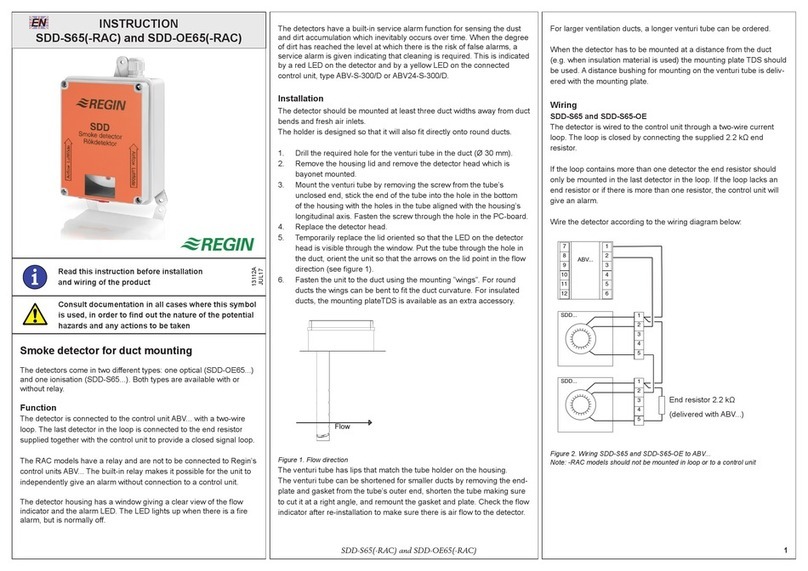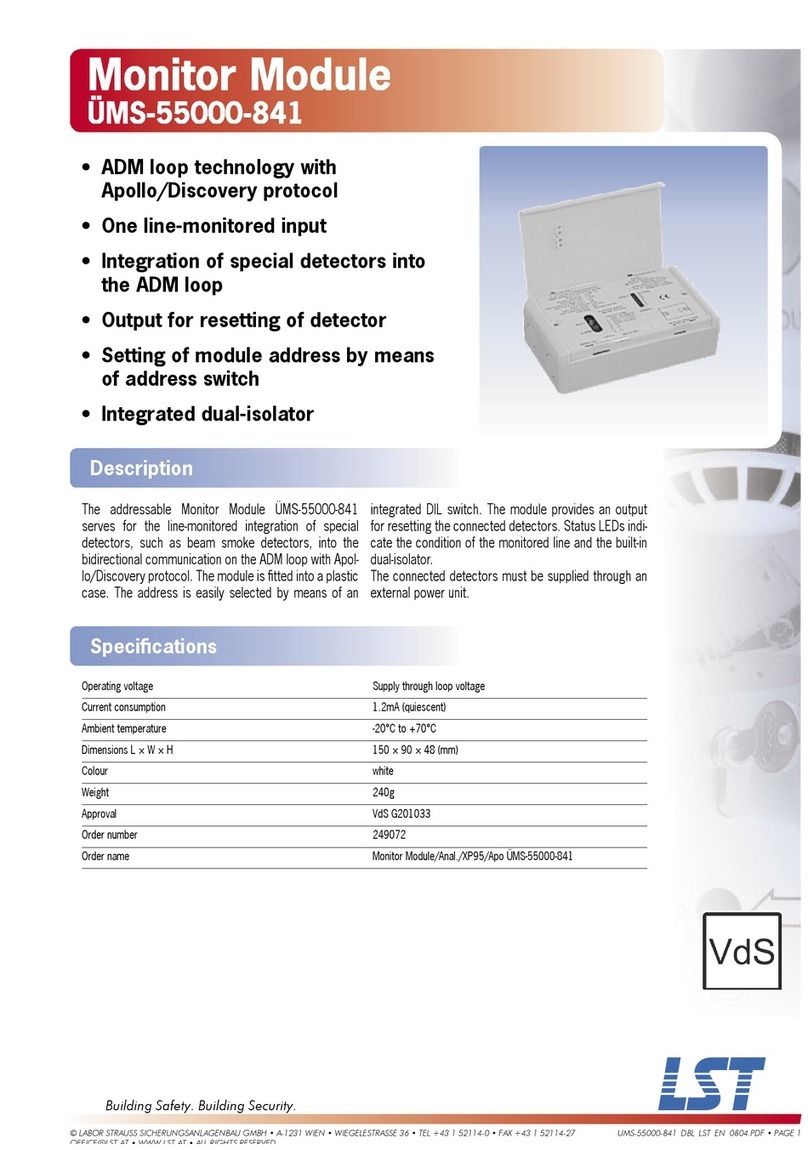
4
• Permanent independent smoke and carbon
monoxide sensors (ionization and electrochemical).
• Loud 85 decibel alarm.
• Alarm/Voice message warning system that specifies
which dangerous condition exists, eliminating any
confusion over which alarm is sounding:
FIRE: The alarm/voice pattern is 8 seconds of alarm
beeps followed by the verbal warning message,
“Fire! Feu!” This pattern is repeated until the smoke
is eliminated. The red LED light will flash while in
alarm/voice mode.
CARBO MO OXIDE: The alarm/voice pattern is four
short alarm beeps followed by the verbal warning
message, “Carbon Monoxide! Monoxyde de Carbone!”
This continues until the unit is reset or the CO
eliminated. After four minutes the alarm/voice
pattern will sound once every minute. The red
Light Emitting Diode (LED) light will flash while in
alarm/voice mode.
LOW BATTERY: When the batteries are low and need
replacing the red LED light will flash and the unit
will “chirp” one time, followed by the warning
message, “Low Battery. Pile Faible!” This cycle will
occur once every minute for the first hour. After
the first hour the red LED light will continue to flash
every minute accompanied by the "chirp" only
sound. The voice message “Low Battery. Pile
Faible!” will sound once every fifteen minutes
during the “chirp” only cycle. This will continue for
at least seven days.
• One “chirp” every 30 seconds is an indication that
the alarm is malfunctioning. f this occurs call the
Consumer Hotline at 1-800-880-6788.
OTE: After seven (7) years of cumulative power up,
this unit will "chirp" twice every 30 seconds. This is
an "operational end of life" feature which will
indicate that it is time to replace the alarm.
Features
